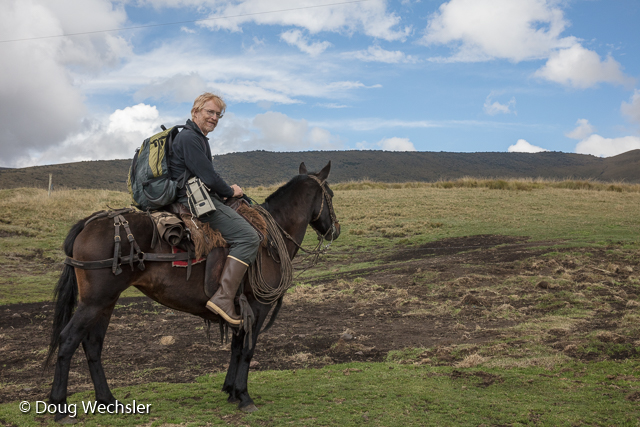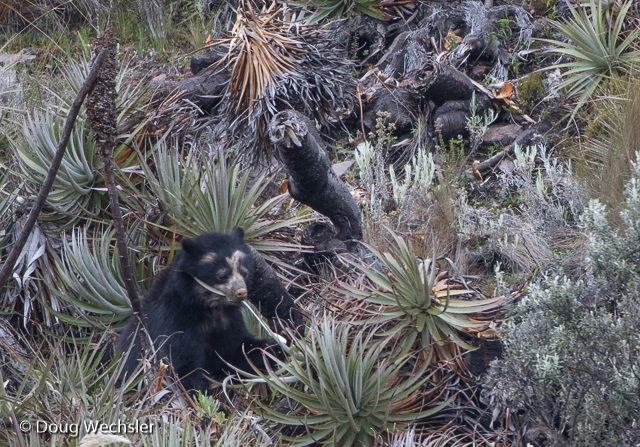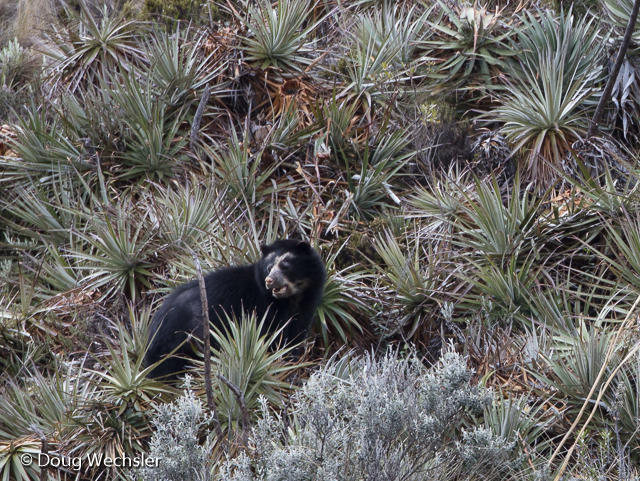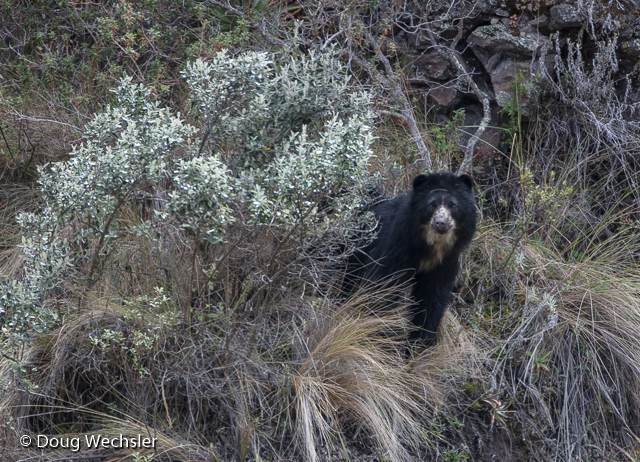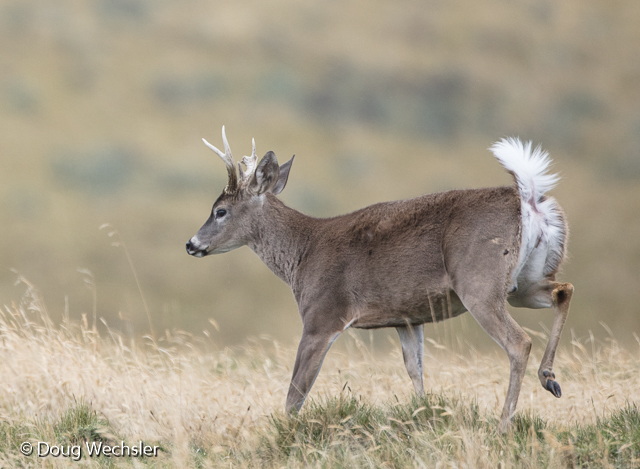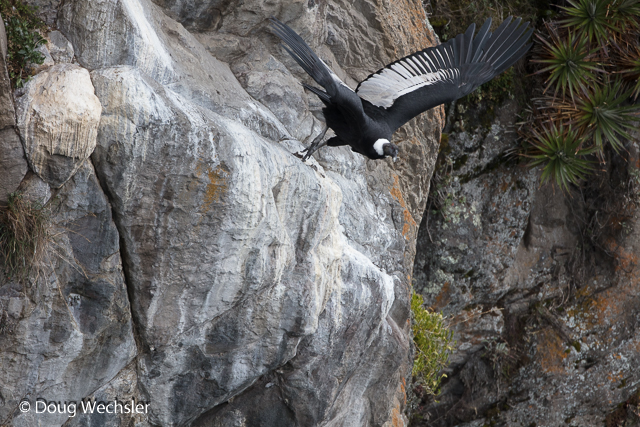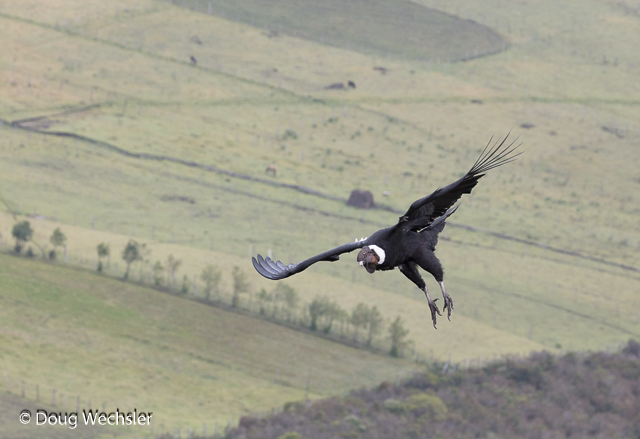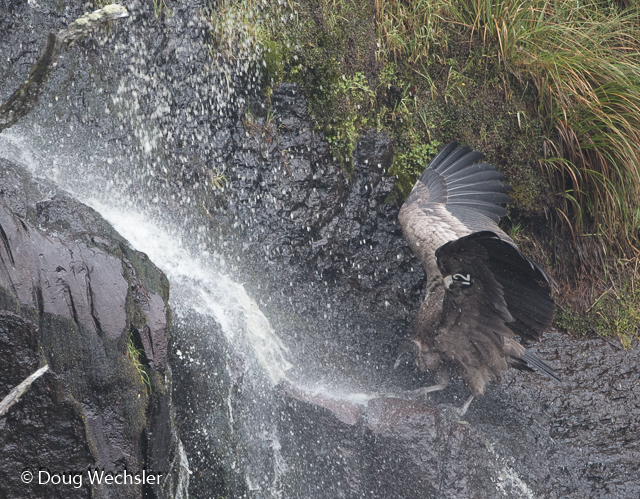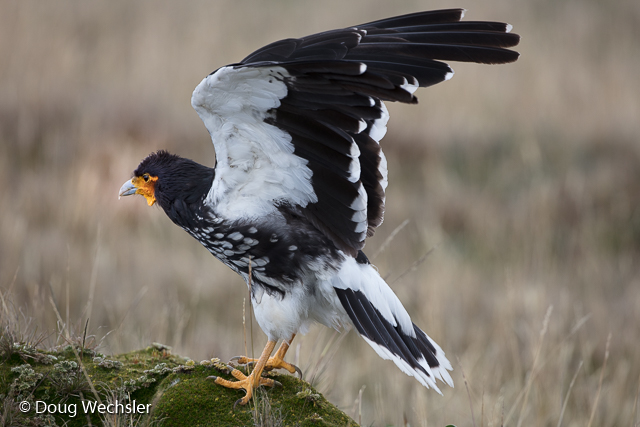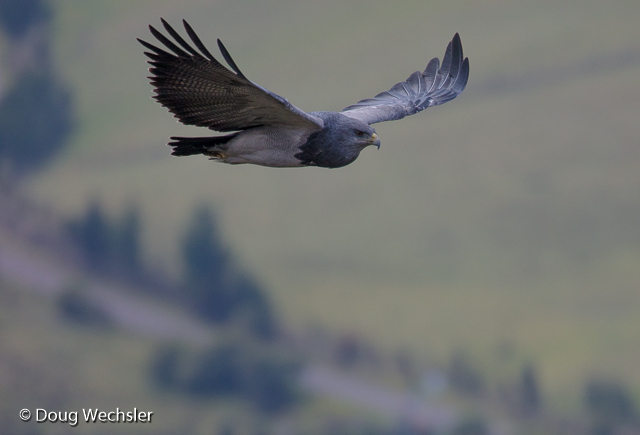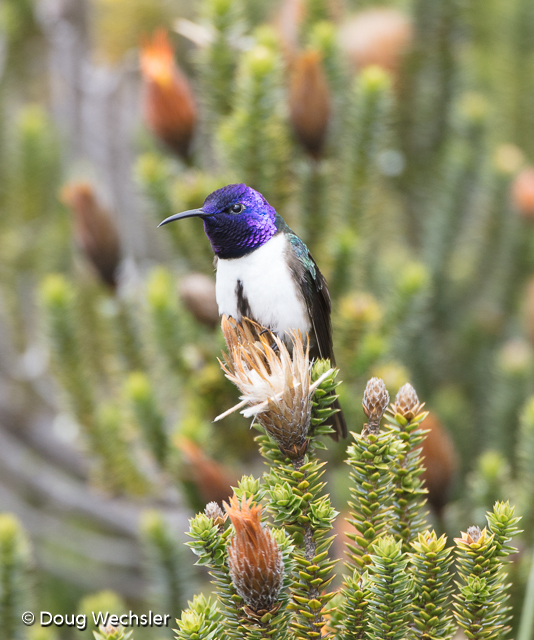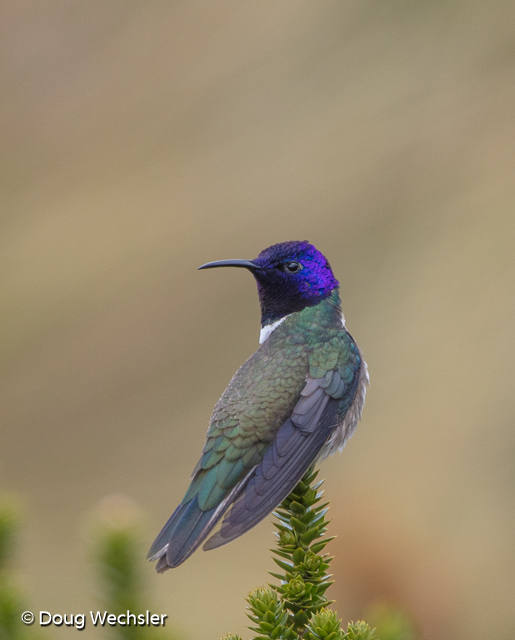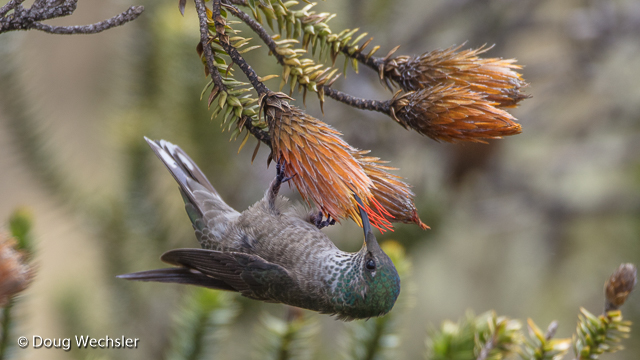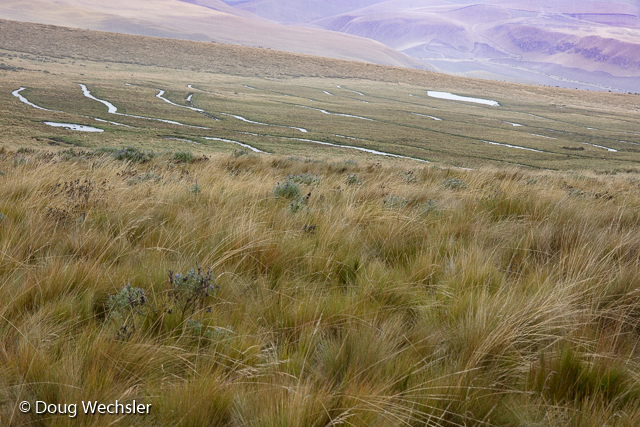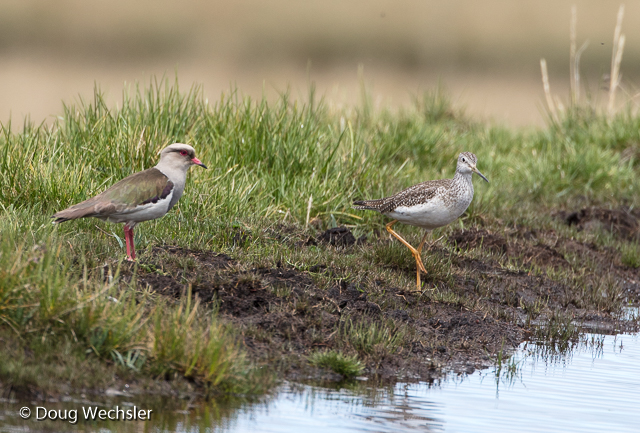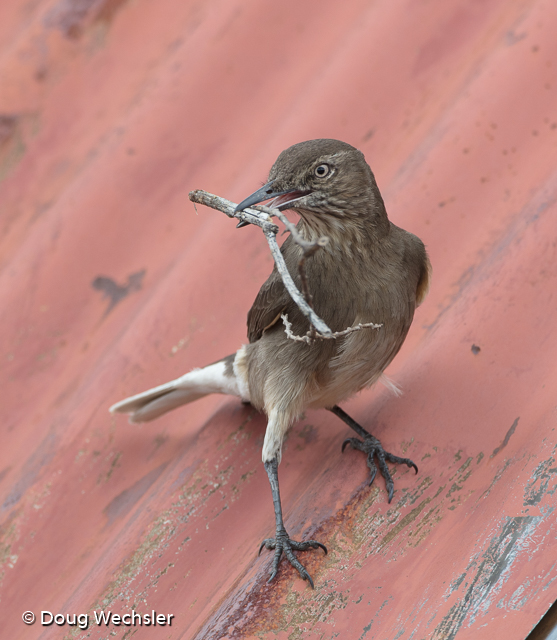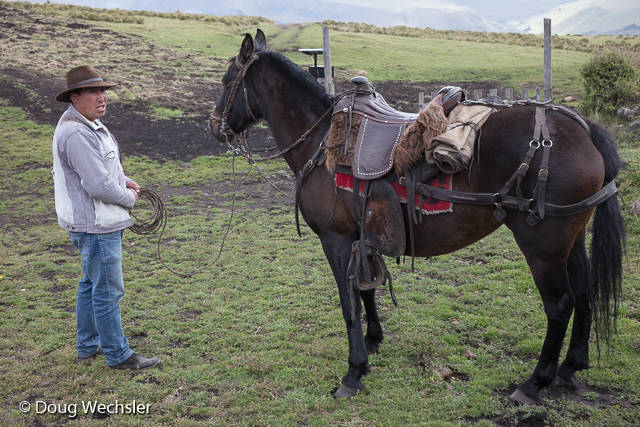I spent my first week back in Ecuador photographing in the Jocotoco Conservation Foundation’s Antisanilla Reserve. Just 30 miles SE of Quito, it sits on the western slopes of Antisana Volcano.
Most of the reserve is paramo, high-elevation Andean grassland. This reserve focuses on the habitat of the Andean Condor, but is home to other spectacular species, such as:
Spectacled bears, the only south American bears, have been sighted regularly. They spend most of their time tearing apart large bromeliads, plants in the pineapple family, known locally as achupallas, or scientifically as Puya. They eat the sweet, nutritious heart where the plant stores its nutrients.
You can tell individual bears apart by their facial markings. I sighted this new bear for the reserve area. This one doesn’t have spectacles.
White-tailed deer also roam the paramo. Dogs running wild have been a problem for deer on the reserve and elsewhere.
The condors like to bath in a waterfall that cascades down their roosting and nesting cliff. This juvenile was tagged #12 as part of a study.
Most conspicuous of all the raptors in the reserve is the Carunculated Caracara, which spends much of its time foraging on the ground.
Another common raptor, Black-chested Buzzard-Eagle, is easy to recognize by its broad wings and short tail.
Juvenile Black-chested Buzzard-Eagles are mostly brown. This one got too close to a female condor.
Where orange-flowered Chuquiragua bushes grow in the paramo, the Ecuadorian Hillstar is sure to be found.
Ecuadorian Hillstar on Chuquiragua bush
Male Ecuadorian Hillstars will often perch on the top of bushes.
Hillstars feed by landing on the flower rather than hovering. Females are duller in color.
The Black-faced Ibis is endangered in Ecuador, though more common farther south. It feeds in grasslands of the Antisana Ecological Reserve and in the more distant parts of Antisanilla Reserve.
The area of the current reserve was formerly home to thousands of cattle. Now only a few hundred graze in a restricted area to protect the paramo. This herd is maintained to provide food for the condors that dine on new born calves and the deceased cattle.
Former wetlands lost to ranching activities are now being restored by the Jocotoco Conservation Foundation.
These wetlands are home to Andean Teal, Yellow-billed Pintails, Andean Lapwings, and migratory species such as Greater Yellowlegs and Baird’s Sandpiper. The lapwing, known locally as “gigle” (that’s pronounced HEE glay) has more of a shrill cry than a gigle.
Inside the reserve is the ‘office’ of the reserve guards. Would be a great location to stay, but it could use a little work inside.
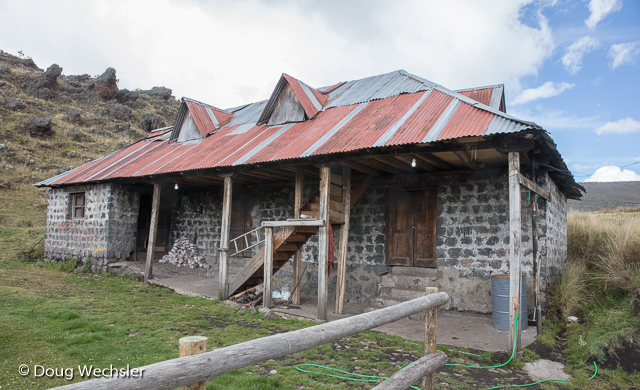 Actually, someone is doing work on the house right now–the Black-billed Shrike-Tyrant is fixing to move in.
Actually, someone is doing work on the house right now–the Black-billed Shrike-Tyrant is fixing to move in.
Muchas gracias a Pancho y Fernando. Sin ellos, no hubiera podido tomar esas fotos.
With special thanks to the Jocotoco Conservation Foundation for protecting habitat for all of these creatures in their Antisanilla Reserve.

